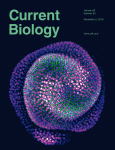- EN - English
- CN - 中文
Behavioral and Functional Assays for Investigating Mechanisms of Noxious Cold Detection and Multimodal Sensory Processing in Drosophila Larvae
行为和功能分析实验研究蝇幼虫感知有害寒冷及处理多模态感知的机制
发布: 2017年07月05日第7卷第13期 DOI: 10.21769/BioProtoc.2388 浏览次数: 10468
评审: Jihyun KimAdler R. DillmanAnonymous reviewer(s)
Abstract
To investigate cellular, molecular and behavioral mechanisms of noxious cold detection, we developed cold plate behavioral assays and quantitative means for evaluating the predominant noxious cold-evoked contraction behavior. To characterize neural activity in response to noxious cold, we implemented a GCaMP6-based calcium imaging assay enabling in vivo studies of intracellular calcium dynamics in intact Drosophila larvae. We identified Drosophila class III multidendritic (md) sensory neurons as multimodal sensors of innocuous mechanical and noxious cold stimuli and to dissect the mechanistic bases of multimodal sensory processing we developed two independent functional assays. First, we developed an optogenetic dose response assay to assess whether levels of neural activation contributes to the multimodal aspects of cold sensitive sensory neurons. Second, we utilized CaMPARI, a photo-switchable calcium integrator that stably converts fluorescence from green to red in presence of high intracellular calcium and photo-converting light, to assess in vivo functional differences in neural activation levels between innocuous mechanical and noxious cold stimuli. These novel assays enable investigations of behavioral and functional roles of peripheral sensory neurons and multimodal sensory processing in Drosophila larvae.
Keywords: Nociception (伤害感受)Background
The capacity to sense and respond appropriately to environmental cues is one of the most fundamental aspects shared among the metazoans. Sensing potentially harmful stimuli, such as noxious temperature, chemical or mechanical insults, and responding appropriately is crucial for avoiding incipient damage that can lead to injury or death. Typically, upon sensing nociceptive stimuli an animal produces a set of avoidance behaviors that either mitigate or allow the animal to escape the noxious stimulus. Elucidating molecular, cellular, and behavioral level mechanisms in processing nociceptive stimuli is of great interest as there is potential for the identification and development of novel therapeutic interventions for aberrant sensory processing, which can lead to neuropathic pain. Sensory and behavioral responses to noxious chemical, mechanical and heat stimuli have been elucidated in Drosophila melanogaster larvae and adults, however, noxious cold detection has only recently been discovered in larvae (Im and Galko, 2012; Gorczyca et al., 2014; Guo et al., 2014; Mauthner et al., 2014; Turner et al., 2016). Drosophila larvae exhibit a distinct set of aversive behaviors in responses to noxious cold stimuli with the predominant cold-evoked response displaying as a bilateral anterior-posterior full body contraction (CT) (Turner et al., 2016). This behavioral response is mediated by class III md sensory neurons (Turner et al., 2016), which intriguingly have also been implicated in gentle touch mechanosensation revealing multimodality in these neurons (Tsubouchi et al., 2012; Yan et al., 2013). The Transient Receptor Potential (TRP) channels Pkd2, NompC, and Trpm are required for mediating noxious cold-evoked behavior and behavioral selection in response to innocuous mechanical vs. noxious cold stimuli is dependent upon class III neural activation levels providing insight into the mechanisms underlying cold nociception and multimodal sensory processing (Turner et al., 2016).
Materials and Reagents
- Kimwipe (KCWW, Kimberly-Clark, catalog number: 34155 )
- 25 x 75 mm microscope slide (Globe Scientific, catalog number: 1301 )
- 22 x 22 mm No.1 thickness coverslip (Globe Scientific, catalog number: 1401-10 )
- 24 x 50 mm No. 1 thickness coverslip (Genesee Scientific, catalog number: 29-118 )
- Pyrex 9 well glass spot plates (Fisher Scientific, catalog number: 13-748B)
Manufacturer: Corning, PYREX®, catalog number: 7220-85 . - Amber glass dropper bottles (Fisher Scientific, FisherbrandTM, catalog number: 02-983B )
- Bel-ArtTM SP SciencewareTM wide mouth color-code safety labeled wash bottles (Fisher Scientific, catalog number: 22-288654)
Manufacturer: SP Scienceware - Bel-Art Products - H-B Instrument, catalog number: F11646-3739 . - Bel-ArtTM SP Scienceware Trigger Sprayers with 53 mm adapters (Fisher Scientific, catalog number: 01-189-100)
Manufacturer: SP Scienceware - Bel-Art Products - H-B Instrument, catalog number: F11620-0050 . - Polypropylene vials (Genesee Scientific, catalog number: 32-120 )
- Droso-Plugs, Narrow vials (Genesee Scientific, catalog number: 59-200 )
- Drosophila stocks:
- ChETA: y1 w*; wgSp-1/CyO, P{Wee-P.ph0}BaccWee-P20; P{20XUAS-CHETA.YFP}attP2/TM6C, Sb1 Tb1 (Bloomington Drosophila Stock Center, catalog number: 36495 )
- CaMPARI: w*; P{UAS-CaMPARI}attP40 (Bloomington Drosophila Stock Center, catalog number: 58761 )
- GCaMP6 (medium variant): w1118; PBac{20XUAS-IVS-GCaMP6m}VK00005 (Bloomington Drosophila Stock Center, catalog number: 42750 )
- Class III md neuron driver: GAL419-12 and GAL4nompC (Bloomington Drosophila Stock Center, catalog numbers: 36369 and 36361 ) (Turner et al., 2016)
- Class IV md neuron driver: GAL4pp1.9 and GAL4477 (Turner et al., 2016)
- Control strain: w1118 (Bloomington Drosophila Stock Center, catalog number: 3605 )
- All trans-Retinal (ATR) (Sigma-Aldrich, catalog number: R2500 )
- Halocarbon oil #700 (LabScientific, catalog number: FLY-7000 )
- Ethyl ether anhydrous (Fisher Scientific, catalog number: E138-500 )
- NutriSoy, Soy Flour (Genesee Scientific, catalog number: 62-115 )
- Yellow cornmeal (Genesee Scientific, catalog number: 62-101 )
- Drosophila agar type II (Genesee Scientific, catalog number: 66-104 )
- Inactive dry yeast (Genesee Scientific, catalog number: 62-107 )
- Dry molasses (Genesee Scientific, catalog number: 62-119 )
- O-phosphoric acid (Fisher Scientific, catalog number: A242-212 )
- Propionic acid (Fisher Scientific, catalog number: A258-500 )
- Drosophila media (see Recipes)
Equipment
- Cold plate assay
- Brush (Craft Smart® round brush set golden taklon) (Michaels Stores, model: Size 3, catalog number: 10408282 )
- Nikon body plus lens combination (Nikon, model: D5300 ) and AF-S Nikkor 18-55 mm DX VRII (Nikon, model: AF-S DX )
- Tripod for mounting DSLR
- Cold plate cooler (TE Technology, model: CP-031 )
- Cold plate temperature controller (TE Technology, model: TC-720 )
- Cold plate power supply (TE Technology, model: PS-12-8.4A )
- Infrared thermometer (Fluke, model: Fluke 62 MAX )
- Aluminum plate–Laminated aluminum shim (Global Equipment, catalog number: WBB512969 )
Notes:- Cut the shim to 7.5 by 11.5 mm at 0.22 mm thickness.
- Paint the plate with black spray paint for high contrast.
- Cut the shim to 7.5 by 11.5 mm at 0.22 mm thickness.
- Black spray paint–12 oz. black flat general purpose spray paint (Rust-Oleum)
- Brush (Craft Smart® round brush set golden taklon) (Michaels Stores, model: Size 3, catalog number: 10408282 )
- In vivo GCaMP assay
- Optogenetic dose response assay
- D5300 DSLR (Nikon, model: D5300 )
- Adapters for mounting Nikon DSLR onto Zeiss microscopes: T2-adapter for Nikon F (Carl Zeiss, model: T2-adapter, catalog number: 416009-0000-000 ) and Adapter 60N–T2 1.0x (Carl Zeiss, model: Adapter 60N, catalog number: 426103-0000-000 )
- Glass plate: 10 x 15 x 0.1 cm
- D5300 DSLR (Nikon, model: D5300 )
- CaMPARI Ca2+ integrator assay
- Photo-conversion filter cube
- 612/69 BrightLine bandpass filter, 25 mm (IDEX Health & Science, Semrock, catalog number: FF01-612/69-25 )
- 440 nm BrightLine SWP edge filter, 25 mm (IDEX Health & Science, Semrock, catalog number: FF01-440/SP-25 )
- 562 BrightLine dichroic beamsplitter, 25.2 x 35.6 mm (IDEX Health & Science, Semrock, catalog number: FF562-Di03-25x36 )
- 612/69 BrightLine bandpass filter, 25 mm (IDEX Health & Science, Semrock, catalog number: FF01-612/69-25 )
- Axio Zoom.V16 (ZEISS, model: Axio Zoom.V16 ) with Illuminator HXP200c lamp (Carl Zeiss, model: HXP 200C )
- Light touch stimulus: Nickel plated pin holder (Fine Science Tools, catalog number: 26018-17 ) with mounted single fine paint brush bristle
- Noxious cold stimulus: TE technology cold plate cooler described in cold plate assay
- Photo-conversion filter cube
- Drosophila media preparation
- Adventurer Pro II Analytical/Precision Balance (Ohaus, model: AX2202 )
- FastPette V2 Pipette Controller (Labnet International, catalog number: P2000 )
- 10ml Serological Pipets (Genesee Scientific, catalog number: 12-104 )
- Droso-Filler, Narrow (Genesee Scientific, catalog number: 59-168 )
- Avantco Induction Range (Avantco Equipment, model: IC3500 )
- Stainless Stock Pot with lid (Thunder Group, catalog number: SLSPS020 )
- Narrow Fly Vial Reload Tray (Genesee Scientific, catalog number: 59-207 )
- Adventurer Pro II Analytical/Precision Balance (Ohaus, model: AX2202 )
Software
- ImageJ (https://imagej.nih.gov/ij/)
- Video to video converter (http://www.videotovideo.org/)
- Zeiss Zen Blue Lite (https://www.zeiss.com/microscopy/us/products/microscope-software/zen-lite.html)
Procedure
文章信息
版权信息
© 2017 The Authors; exclusive licensee Bio-protocol LLC.
如何引用
Patel, A. A. and Cox, D. N. (2017). Behavioral and Functional Assays for Investigating Mechanisms of Noxious Cold Detection and Multimodal Sensory Processing in Drosophila Larvae. Bio-protocol 7(13): e2388. DOI: 10.21769/BioProtoc.2388.
分类
神经科学 > 行为神经科学 > 实验动物模型 > 其它
细胞生物学 > 细胞成像 > 荧光
细胞生物学 > 细胞成像 > 活细胞成像
您对这篇实验方法有问题吗?
在此处发布您的问题,我们将邀请本文作者来回答。同时,我们会将您的问题发布到Bio-protocol Exchange,以便寻求社区成员的帮助。
Share
Bluesky
X
Copy link













